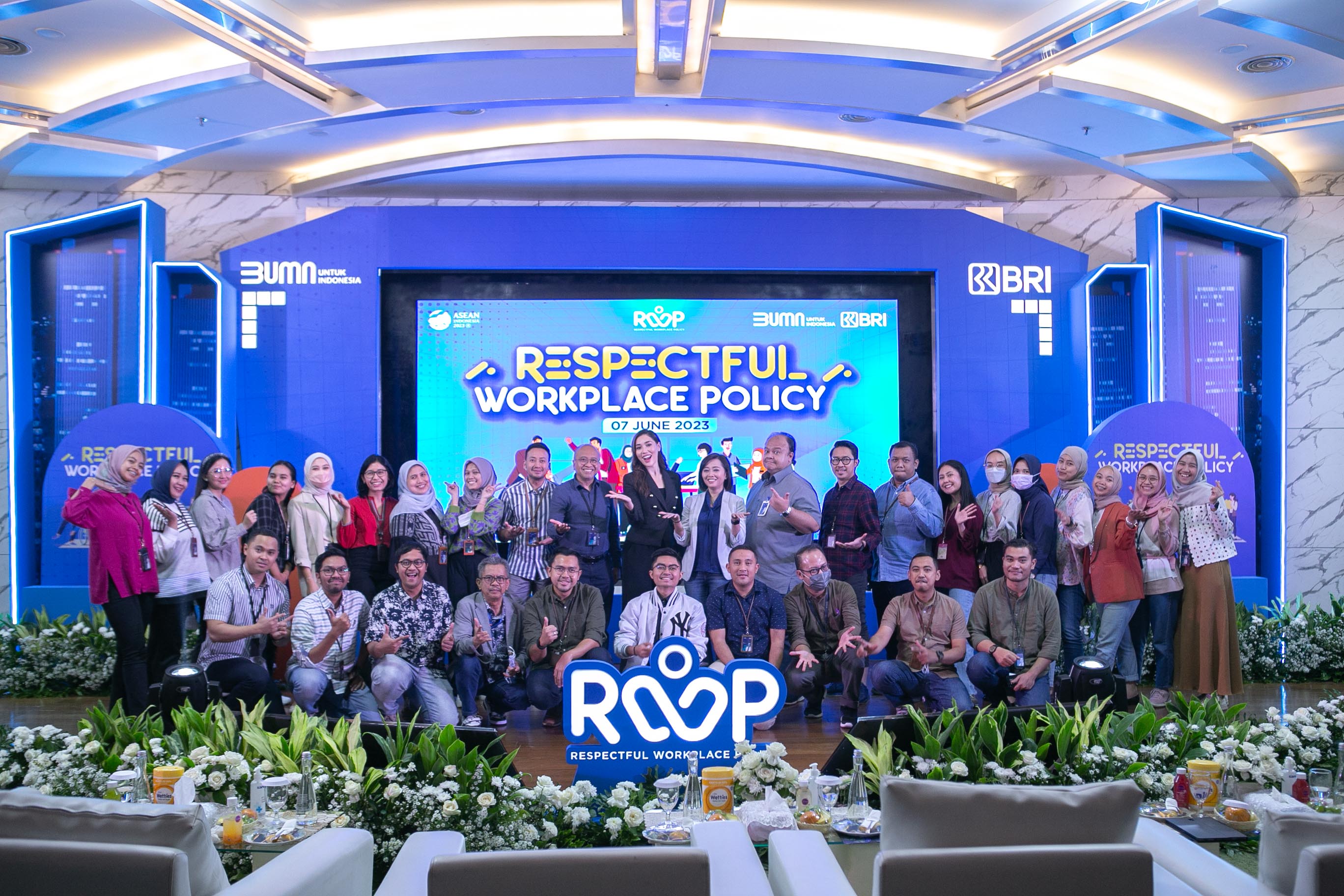Layanan Banner new
Human Capital Performance
Breadcrumb
BRI Human Capital Performance
BRI upholds the principles of equality and implements anti-discrimination policies at every function of human capital management, both in terms of career development, remuneration and other aspects. BRI also supports the empowerment of women by providing a forum or space for female employees to demonstrate their capabilities and roles at work. BRI believes that the active participation of female employees can have a positive impact on the company and on other women.
- BRI's Employee in Number
- Employee Training & Development
- Employee Engagement & Turnover
- Occupational Health & Safety Policy
- Respectful Workplace Policy
In accordance with the policies contained in the Decree of the Board of Directors No.B.4e-PKO/ KKO/01/2016 dated January 20, 2016, BRI always upholds the principle of equality and implements an anti-discrimination policy in every function of human capital management. BRI is committed to providing a respectful workplace without discrimination, harassment, bullying, and other form of violence, and upholding dignity and self-respect to maintain employees’ productivity. BRI applies the principle of equality and provides equal opportunities for employees with disabilities, with positions and types of work that are tailored to their respective levels of expertise and skills. The following is a chart of BRI employees composition:
Number of Total Employee by Years
Number of employees by Gender
Male
2021
48,354
2022
46,411
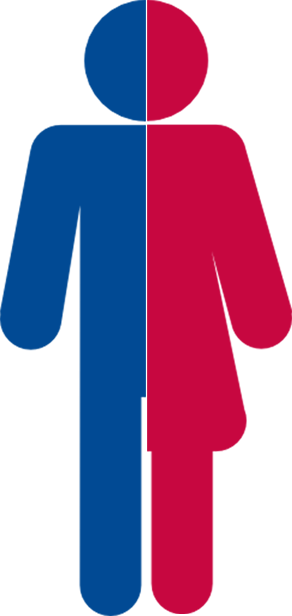
Female
2021
34,364
2022
28,324
Number of Employees by Age Range & Gender
Male
Female
20 - 24
25 - 29
30 - 34
35 - 39
40 - 44
45 - 49
50 - 54
above 54
Remarks:
2021
2022
Number of Employees with Disabilities
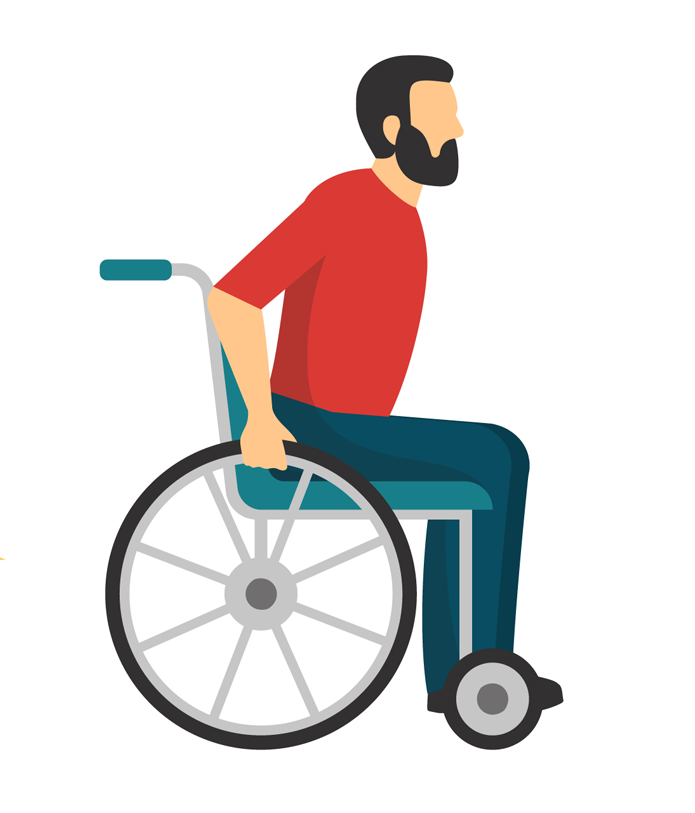
Headquarters
Regional Offices
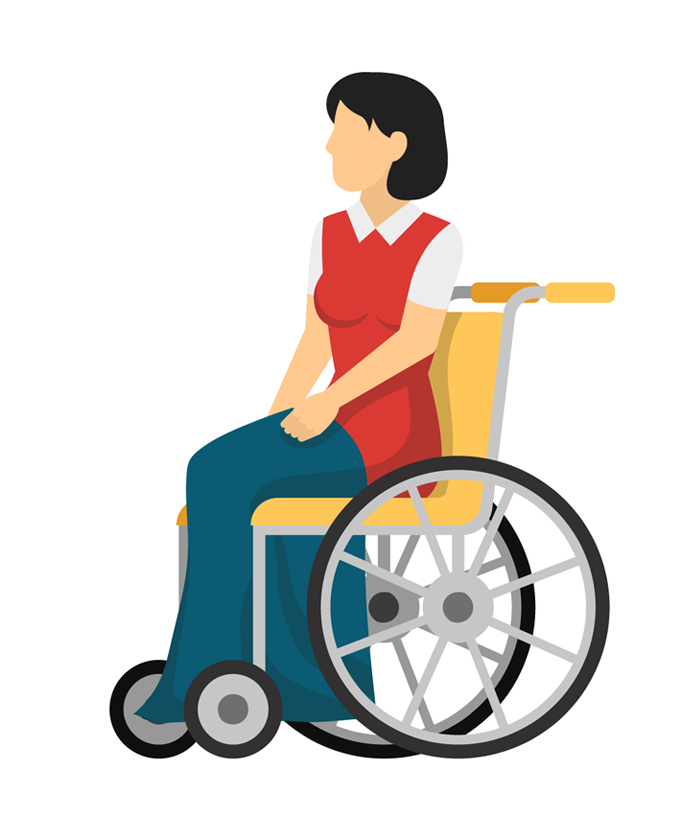
Remarks:
2021
2022
Gender Equality Chart as of 2022
Gender equality at BRI can be seen in the composition of female employees spread across all levels as follows:

Composition of Female Employees of All Employees
Composition of Female Employees at Junior, Middle and Top Management Levels
Composition of Female Employees at Junior Level (First Level) Management
Composition of Female Employees at Top Management Level
Composition of Female Employees at Revenue Generating Level Functions
Composition of Female Employees at STEM (Science, Technology, Engineering, and Mathematics)-related Roles
Management Composition Chart by Gender as of 2022
BRI continues to be committed to paying attention to BRI’s human resources in running its business, both at the management and non-management levels. The following chart shows the composition of employees at management and non-management levels by gender and age group:


Remarks:
SEVP
EVP
VP
AVP
SM
Manager
Assistant Manager
Officer
Assistant
Management Composition Chart by Age Group as of 2022
SEVP
EVP
VP
AVP
SM
Manager
Assistant Manager
Officer
Assistant
Remarks:
< 30 years old
31-40 years old
41-50 years old
> 50 years old
Average Employee Salaries Chart by Position as of 2022
BRI brings about equal opportunities by providing equal salaries regardless of employee gender. This can be seen from the absence of significant differences between the average salaries of male and female employees, as shown in the chart below:


Remarks:
SEVP
EVP
SVP/VP
SM/AVP
Manager
Assistant Manager
Officer
Assistant
BRI is aware of the risks of violating employees’ rights such as through discrimination or the employment of child labor and forced labor. In 2019 - 2022, there were no reports of incidents of discrimination within the BRI organization and there was no risk of forced labor, child labor or the risk of young employees being exposed to hazardous work in the operational team or BRI supply partners.
One tangible form of BRI’s anti-discrimination policy is the guarantee that employee wages are not determined based on gender. The company’s considerations in providing salaries and remuneration fully take into account the classification of positions, years of service, workload, and work performance. BRI also implement the minimum wages given to employees since joining have consistently been above the minimum wage rates applicable in all regions where the Company operates. In addition, employees are included in the BPJS Employment and Health programs which aim to provide protection and social welfare for all employees.
New Employee Admission Paths by Gender and Recruitment
Gender equality in BRI can also be seen from the number of recruits in BRI. As in 2022, the number of women recruits were superior than men.
Male
BRILiaN Future Leader Program: 92
Marketing Officer, Administration Officer, and Frontliners: 1,342
Others: 38
Fresh Graduates: 1,472
Experienced Hires: 107
Total
1,579

Female
BRILiaN Future Leader Program: 83
Marketing Officer, Administration Officer, and Frontliners: 1,113
Others: 21
Fresh Graduates: 1,217
Experienced Hires: 29
Total
1,246
New Employee Placement Locations by Region as of 2022
BRI recruits employees from all regions in Indonesia. The details of the new employee placement locations by region and entire age composition of new employees are shown below:


Sumatera
230
Male
195
Female

Jakarta & Banten
354
Male
245
Female

West Java
255
Male
106
Female

Central Java
& Yogyakarta
213
Male
233
Female

East Java
123
Male
127
Female

Eastern Indonesia
& Indonesia
404
Male
340
Female
Composition of New Employees by Age Group as of 2022

1,260

798
< 31 years old

313

446
31-40 years old

6

1
41-50 years old

0

1
> 50 years old
The pandemic created new challenges for companies, especially in developing attractive pedagogical strategies in providing training to employees. Social restrictions in the pandemic era reduce the opportunity for employees to undergo the educational process in-person. Nevertheless, BRI continues to be committed to adapting so that the employee capacity development program can continue to run optimally. One way is by organizing webinars and building an online learning system (e-learning). Currently, various training materials such as the implementation of Good Corporate Governance, gratification and bribery control, as well as training on the principles of sustainable finance have begun to be given to employees online. 100% of employees have received training and regular performance and career development assessments. Training is provided to employees internally and in collaboration with external parties.
Number of Hours of Education/Training and In-class & E-Learning Participant as of 2022
2,957,075 Participants
8,653,464 Hours of Education/Training
Number of Hours of Education/Training Echelon Group as of 2022
Top Management
(VP - SEVP)
251 Participants
15,351 Hours of Education/Training
Middle Management
(AM - AVP)
12,333 Participants
1,554,855 Hours of Education/Training
Operation
(Assistant - Officer)
97,776 Participants
7,083,257 Hours of Education/Training
Average Training and Development Hours per Employee as of 2022
Average Training and Development Hours per Employee by Gender
Average Training and Development Hours per Employee by Age Group
Trend of Employee Engagement Index
BRI realized that employees were an important asset in supporting the achievement of quality and sustainable growth in the company’s performance. Therefore, BRI was committed to maintaining a conducive work environment, one of which was by measuring the level of employee engagement with the company through the Employee Engagement Survey (EES). Apart from being a means of measuring the level of employee engagement, EES was also a medium to capture aspirations for improving human capital management. Employee Engagement Survey (EES) is a survey participated by all employees, which indicates the attitude, behaviour, and relationship between employees, their work, and the Bank. The Engagement Index showed the level of employee engagement and commitment to Bank BRI as measured by the average employee rating from a scale of 1-4. which employees were proud to be part of the company, the desire of workers to remain part of the company for a certain period of time, and the persistence of workers to strive to provide the best for the company).
BRI’s Employee Engagement Framework measures the quality of the following aspects:
- Understanding of company’s vision, mission, purpose, and strategy and its relation to employees’ motivation
- Leadership credibility
- Internal communication and collaboration
-
Employee well-being:
- Employee empowerment
- Safe and comfortable workplace,
- Learning and Growth opportunity,
- Fair compensation and benefit,
- Attention, recognition and appreciation
- Work-life balance,
- Overall Job Satisfaction
Since 2018, BRI’s Engagement Index increased. The survey results showed that in 2022 the employee engagement index at BRI increased, from 3.46 from a scale of 4 in 2021 to 3.48 from a scale of 4 in 2022 with the percentage of engaged employees at 92%.
Employee Engagement Index
3.48
(from a scale of 4.00)
Percentage of Actively Engaged Employees by Gender
Percentage of Actively Engaged Employees by Age Group
Employee Turnover Rate
One of the goals of recruiting new employees is to replace employees who leave the Company. BRI employees’ satisfaction level with BRI’s Human Capital management is hinted by the turnover rate. In 2022, the turnover rate was 1.02%, lower than the previous year’s rate of 1.84%. This figure indicates that BRI has achieved positive results and improved its ability to retain its workforce compared to the previous year. BRI has made various efforts to maintain the turnover rate, such as providing competitive compensation compared to the industry, benefits that provide a sense of security and comfort in the workplace, a motivating career path, and a conducive work environment. Creating a safe, comfortable, and conducive work environment has always been BRI’s priority.
Total Employee Turnover Rate
2.88%
Total Employee Turnover Rate by Gender
Total Employee Turnover Rate by Age Group
Total Voluntary Employee Turnover Rate
1.12%
Total Voluntary Employee Turnover Rate by Gender
Total Voluntary Employee Turnover Rate by Age Group
Moreover, BRI also give rights to leave and absence for employees, and still give financial rights for employees, as mentioned in points of agreement in the PKB and pedoman kepegawaian (personnel guidelines). The types leave that employees can apply for are annual leave, holiday leave, menstrual leave, parental leave, miscarriage leave, and special duty leave. Meanwhile, the types of absenteeism permits that can be granted by BRI under certain conditions include: marriage, marriages of children, births of children, circumcision of registered children, death of immediate family members, and so on.
Regarding the right to parental leave, BRI gives rights to female employees who will give birth as well as male employees whose spouses are about to give birth.
BRI successfully created a comfort working environment so the employee absence level in 2022 is only 2.44% from total number of employees.
Occupational Health & Safety Policy
PT Bank Rakyat Indonesia (Persero) Tbk commits to continuously improving Occupational Safety and Health (OHS) in its business activities to increase employee productivity and to create a safe and healthy work environment. BRI regulates the OHS implementation and policies through The Circular Letter of The Board of Directors No. SE.110-DIR/MOP/12/2019 which updated by through The Circular Letter of The Board of Directors No. SE.24-DIR/ORD/04/2022, and The Letter of Standard Operating Procedure No. SO.35-ORD/06/2022. In summary, these policies cover the following matters:
- The policy is formulated by referring to applicable government regulations and standards set by the Company, namely ISO 45001:2018 Occupational Health and Safety Management System.
- The policy applies to BRI Employees and Non-Employees (Building Management and Vendors) within BRI Working Environment.
- This policy aims to take preventive and control measures against the risks of the Company's operational activities, to protect or prevent work accidents and occupational diseases to all interested parties of the Company, including in the process of company goods and services procurement based on Occupational Health and Safety (OHS).
-
The OHS Management System (SMK3) coordination structure consists of:
- Occupational Safety and Health Committee (P2K3)
- Emergency Response Team
P2K3 is formed based on the policy of the legislation and ratified by the Manpower Office. P2K3 membership consists of elements of management and workers. -
BRI is committed to:
- Continuing to improve the implementation of the Company's Occupational Health and Safety Management System in a systematic and integrated manner.
- Improve the top management and other employees' ability, understanding, attitude, and behavior in carrying out each job with a culture of Occupational Safety and Health.
- The policy of OHS is approved by The Board of Directors, while the Standard Operating Procedures regarding OHS Implementation is approved by the Senior Management.
Occupational Health & Safety Programs
OHS management system includes the following elements:
-
OHS risk and hazard assessment to identify what can cause hazards in the workplace is called the Hazard Identification Risk Assessment Determining Control (HIRADC). HIRADC covers at least the following: work area, description of process/target/activity, nature of process/target/activity, external and internal legal aspects, OHS hazards, risk impact, inherent risk, type of control, and residual risk. Hazard Identification Risk Assessment Determining Control (HIRADC) is carried out at least once a year in each working unit if the following condition(s) is/are met:
- Changes in the working process
- Changes in the company's working conditions
- Modification of the equipment used
- Work accident
- Occupational diseases
- Emergency conditions that affect the company's business processes
- Risk assessment to determine the size of the risk to decide the priority of control over the level of risk of accidents or occupational diseases.
-
Determining the Emergency Response Team in each working unit in stages:
- Conducting OHS socialization and periodic emergency response trials.
- Emergency Response Trial at least once in 1 (one) year
- Review and improvement of the OHS Management System performance are conducted to ensure the suitability and effectiveness of the OHS Management System implementation. Reviews are carried out on planning, implementation, monitoring, and evaluation activities. The review results are used to improve the performance of the OHS Management System.
- OHS monitoring and evaluation are carried out periodically through inspection, testing, measurement, and internal auditing of the implementation of the OHS Management System.
- BRI has procedures in the flow of reporting, analysis, and investigation of work accidents that have been conveyed to all employees. From reporting incidents to the risk management function, performing first aid, conducting investigations to taking justifiable corrective actions.
-
Understanding OHS is part of the rights and obligations of every worker. Therefore, Human Capital is an essential element in implementing the OHS program. Several things can be done to create and internalize an OHS Culture for Workers, including OHS Education and Socialization. OHS education and socialization programs can be carried out through various media, including:
- In-class training, webinars, e-Learning; and/or
- Other communication media (letters, infographics, videos, podcasts, etc.)
- Emergency Response Trial at least once in 1 (one) year
- BRI takes preventive and controls measures against the risks of the Company's operational activities to protect and prevent work accidents and occupational diseases to all interested parties of the company, including in the company's procurement of goods and services process based on OHS.
Employees’ Wellness and Mental Health Management
BRI is committed to supporting employees’ wellness and mental health to create a workplace culture that fosters engagement, productivity, and loyalty, which is also aligned with our Core Values AKHLAK (Trust, Competent, Harmonious, Loyal, Adaptive, Collaborative).
 BRILiaN Communities
BRILiaN Communities
BRI establish BRILiaN Communities, groups formed by BRI employees based on shared interest. All employees are given equal access to join the communities that cover a variety of activities:
- BRI Sport Communities (Basketball Club, Tennis Club, Football Club, Bowling Club, Volleyball Club, Golf Club, Runners Club, Table Tennis Club, Badminton Club, Martial Arts Club, Aerobic Club, e-Sports Club, Cycling Club, and Futsal Club)
- BRI Art and Culture Communities (Dance Club, BRILiaN Voice Club, BRI Band Club)
- BRI Adventure Communities (Dive Club, Fishing Club, Trail Adventure Club, Bikers Club, Hiking and Nature Lovers Club)
- BRI Social & Interest Communities (Financial Management Club, Photography Club, Social Movement Club)
 BRILiaN Center
BRILiaN Center
BRI set up BRILiaN Center, a place for employees to exercise (Fitness Center), to hone their talents and skills, and to be involved in work-life balance programs.
Fitness and Recreational Center

Music Stage and Community Center
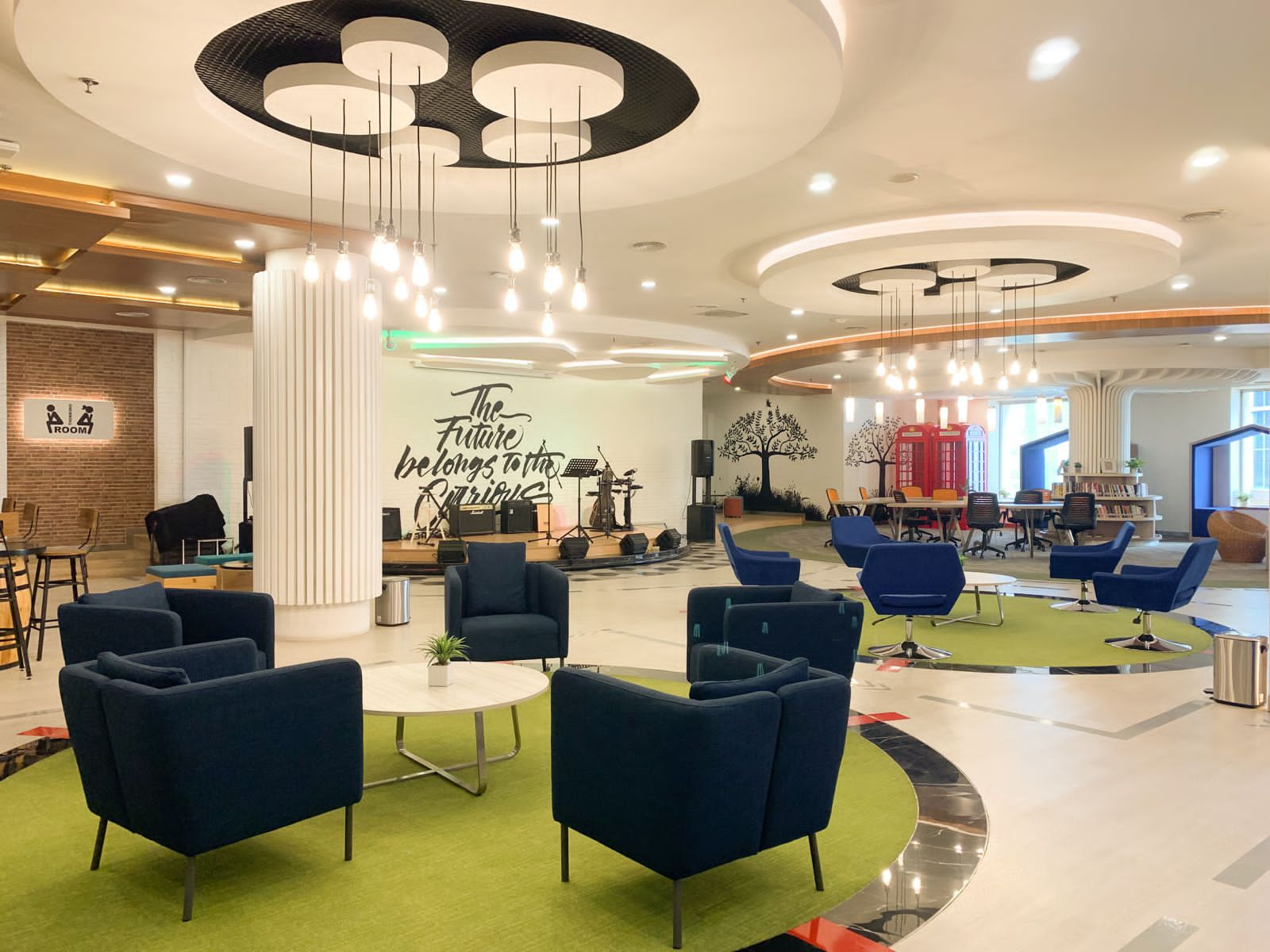
 Physical Wellness Management
Physical Wellness Management
Regular Medical Check-up
BRI provides a medical check-up package for its employees in at least once every two years, which covers physical examination. We are concerned that employees maintain their health and manage their blood pressure, weight, blood sugar, and lungs capability. BRI also supports medical expenses for the employees and their spouse and children, so they are provided with health security.
Health Facilities
BRI provides health facilities for employees and their family members, which include guarantees for first level outpatient care, advanced outpatient care, childbirth, dental care, general medical check-ups, eyeglass replacement benefits and retirement health programs that could be used when retired.
 Mental Health Management
Mental Health Management
BASIC (BRILiaN Assistance Center)
To help the employees manage their mental health, BRI provides BRILiaN Assistance Center (BASIC), where employees can access Human Capital assistance easily and comfortably, including coaching, counselling with psychologist, financial consultation, and wellness services. BRI employees are able to access BASIC through BRISTARS (e-Office and Human Capital Management System) or visiting basic.bri.co.id.
 Family-friendly Workplace
Family-friendly Workplace
Childbirth and Childcare Supports
- Paid Maternity Leave: Employees can take paid 3-month maternity leave of a child’s birth.
- Paid Paternity Leave: BRI also allows spouse to take up to 3 business days off after child’s birth.
- Breastfeeding room
- Childcare center
Other leave or time-off from work policies
- Paid annual and block leave (mandatory 5-consecutive-day leave as part of the annual leave)
- Paid Leave: Marriage, Menstrual, Family care and fertility treatment (marrying off a child registered with the company, birth of a child from a registered wife, circumcision of a registered child, death of an immediate family member, miscarriage)
Working arrangement policy
- Work from anywhere policy: Employees can work at a designated place (i.e: Home, BRI working space)
- Shift working hours: Flexible work schedule for Working units/ Divisions with regular work intensive periods.
Absentee Rate
BRI creates a safe and comfortable work environment; the employee absenteeism rate in 2022 was only at 2.44% of the total number of employees.
Disclosure on Respectful Workplace Policy
BRI values and upholds the principles of equality, diversity, and anti-discrimination. BRI first applied it by acknowledging the antidiscrimination policy for employees with disabilities through the Decree of the Board of Directors Number B.4e-PKO/KKO/01 of 2016 dated January 20, 2016 on Provisions for Fulfillment of Employees with Disabilities. The implementation of the policy is applied in the aspects of career development, remuneration, as well as other aspects.
Furthermore, BRI has issued Respectful Workplace Policy through the Decree of the Board of Directors Number B.1221-DIR/HCS/07/2022 dated July 29, 2022. BRI is committed to providing a work environment that is mutually respectful, free from discrimination, exclusion, or restrictions, sexual or non-sexual harassment, bullying and other forms of violence and upholds dignity and self-esteem to maintain productivity while employees are at work.
In June 2023, BRI conducted a Webinar on Respectful Workplace Policy, attended by BRI employees from all over Indonesia, both in-person and online. This webinar was held to socialize Respectful Workplace Policy to BRI employees, as well as to enhance employees’ awareness and understanding to build a workplace environment that is inclusive, conducive, and productive.
